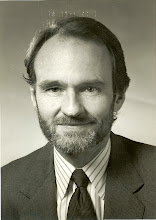This Sunday we’re trying to make some sense of the near-term situation re crude prices.
We believe that course-of-least price resistance is to remain north, certainly until the Mar/5 meeting, Netanyahu / Obama.
Netanyahu has the past few weeks, singlehandedly, made the Iranian nuke situation the central focus of the Western world, convincing all that this is the key concern now. Some believe that if Netanyahu leaves that Mar/5 meeting with anything but a guarantee that the US will stop Iran, one way or the other and soon, that he will tell Obama that he will do it before the Nov elections. Obama will want any strike postponed given what his advisers have told him it could do to the economy, a better economy being his only chance of re-election.
If the Israelis do strike, more military observers now see a small chance that even the deeply buried facility – Fordow – could be taken out with some luck. Still, Obama will stress even tougher sanctions and enhanced convert action at the meeting, and of course, more talks.
Some believe of course that the reason Obama has not armed the Syrian resistance is to appease the Iranians. Certainly the Saudis do. They are likely correct, Obama waiting - even after the recent UN experience, being refused access to the Parchin complex - until after the Mar/2 Iranian “election” to resume talks (that, and they are not 100% sure just who they would be arming). Such support of the resistance may take place anyway but around the useless UN since Russia would veto.
We think the Iranians are bluffing for 1) goodies and 2) prestige in the region, with no intent to ever strike. Risk is if they get their choreography wrong, misjudge their timing. That is the central point of concern we believe
Some obervers aren’t worried, like the CEO of France’s Total group, who says, “Let’s calm down,” reminding us that the Saudi’s have promised to make up for lost supply. But that mean’s practically nothing over the intermediate term, post strike, given the initial shock, and carry over, which would be enough to stall this economy (and put the E-Z in the sewer).
Others say either way, the lower costs of natural gas here will offset the all-in impact of higher gasoline. Others, that supply constraints are not the same as last year same time, citing the Japanese supply chain disruptions. These folk are the willfully blind.
Robert Craven
